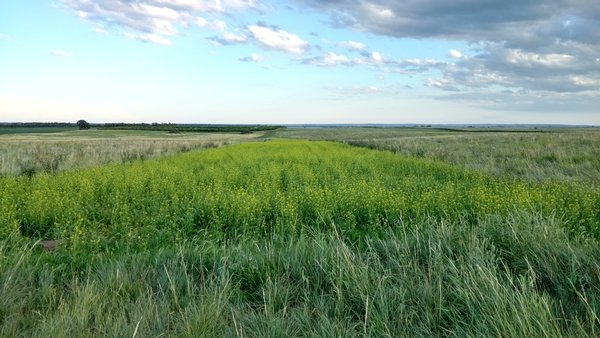2017 Pheasant Season End Conclusions - Final Report
January 10, 2018 by UGUIDE South Dakota Pheasant Hunting

Forecasts
While I will say that GFP findings of 50% down was similar to our harvest data, it did indicate that the drought had a major impact. However, we still feel that the 50% was merely coincidental and GFP findings are vastly different than what we see at UGUIDE camps.
We also believe that forecasting in general is ineffective, inaccurate and often times very misleading. For example it would be hard to isolate impacts of the drought on birds this year vs. the impacts of the proliferation of the chemical based Roundup Ready Corn and Soybean farming system.
Feedback
From opening weekend we started to get hunter feedback that would indicate ALL UGUIDE camps were impacted this year and not just camps located near ground zero for the drought like Mobridge for example. Here is a list of the key findings from this season:
1. High hen to rooster ratios from season beginning - This is normally what you find in the later weeks of the season but never early season. As the season progressed, it indicated a poor hatch and there was no re-charge of roosters from a strong June hatch. In a strong June hatch you could have as many as 12-15 chicks in a brood of which 65% would be roosters.
2. Consistently dwindling harvested birds per person averages on the 3rd and 4th day of hunting - This was also a consistent trend across the season and across all UGUIDE camps. It either indicated that the bird numbers on a given farm could not hold up to the hunting pressure or hunters were not as motivated to hunt as hard as their hunt progressed. This did not become obvious until later in the season when the indicators became more apparent. This is further evidence of a poor hatch in general.
3. Few limits and lower HBPP (Harvested Birds Per Person) across the season - some limits were taken earlier in the season but on average much fewer limits than in most other years. This was also the case across all camps and most weeks.
4. A late crop harvest did not improve conditions for late season hunters - When the crop harvest completes around Thanksgiving or later, the later season hunters usually fair better than the early season hunters. That was not the case this year. Possibly an indicator of poor numbers.
5. Quality of habitat did not matter - We have some camps with habitat better than ever and very optimized for pheasants. This is one of the reasons we feel GFP findings differ from what our hunters will experience at our camps and is usually true. Our HBPP reports indicate that habitat quality was not able to mitigate the impacts of this spring and early summer's drought.
6. A crop of grain was had but not a crop of pheasants - South Dakota posted its 4th largest corn crop ever. How can this happen when just about every county in the state was declared a natural disaster area for drought? It's because the rains did come after July 15. Too late for new broods but not too late for crops. Many farmers and crop specialists would say that in many cases they were only a few days away from a major crop failure.
Conclusions
The unanimous reports of high hen numbers across all camps is favorable for a potentially good hatch next spring. Birds can rebound in 1 year. I have seen it many times. One of our late season groups reported 31 points in one field. Mostly hens.
The low HBPP across the state will cause much turnover for outfitters. We did not see it at our camps because our hunters can tell the quality of habitat was there but birds were not and could rationalize the early drought reports which hit national media. In general it is not a good practice to "fire your habitat manager" when there is an act of God impacting your season. Leaving a well managed property because you do not understand the implications and risks of fair chase pheasant hunting is not wise.
We learned that great habitat can mitigate a lot of nature's harshness, but not this drought. When there is no moisture, there are no bugs and there are no birds. Newly hatched chicks require small invertebrates for the first 8 weeks of their life to survive.
Other factors like low total CRP acres, increased Roundup Ready Corn and Soybean acres and reduced small grain and grassland pasture acres are also major impacts. The new farm bill coming out as early as this spring can help with this substantially. Contact your congressman and request an increase to the 24 million acre cap in the current farm bill. We would like to see 32 million acres or higher. This would also help the poor grain prices farmers are experiencing as well. The chemical based cropping systems are not helping wildlife either.
The good news is that there is much happening to optimize the habitat acres and even the working land crop acres the state has. Even with the good habitat we have at our camps, we still depend on good weather to deliver a bumper crop of pheasants.






